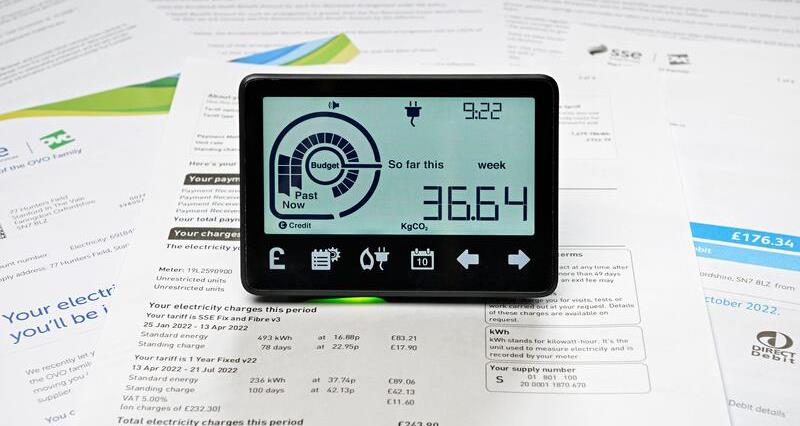The NFU has been working closely with the banks and UK Finance to develop this guidance for members who may be struggling with repayments or other interest rate issues. UK Finance is the UK’s association for the banking and finance industry, who represent more than 300 finance firms across the industry.
The Bank of England has increased its base rate to 5.25% in response to the continued inflation seen across the global economy.
This unpredicted rapid rise in the rate has hit UK business, including farm businesses, as an additional cost alongside the continued volatility in input prices and the phase out of BPS (Basic Payment Scheme) support.
At the beginning of August the Bank of England increased its base interest rate (or “Bank Rate”) to 5.25%, from 5%. This latest rise has seen the Bank hike the rate 14 times since December 2021, when its cost of borrowing stood at 0.1%. This rapid increase sets the rate at a 15 year high; the last time rates were at 5.25% was in April 2008. The increase in rates is in response to the continued inflation seen in the UK and across the global economy.
High inflation is unwanted because it reduces people’s spending power and erodes the value of assets, so the Bank of England use interest rates as a monetary policy tool to try to dampen inflation back down to the acceptable level of 2%.
What's causing interest rates to rise?
The current UK inflation rate sits at 7.9%, having fallen from the highs of 10.4% in February 2023. Prices have risen due to the disruption to supply chains during the Covid pandemic and the huge amounts of money in Britons' savings after two years of lockdowns and government handouts. This increased the money supply in the UK as well as the increased consumption once the country was out of the lockdown periods, which also boosted prices. Alongside this the war in Ukraine has disrupted the supply of commodities such as energy and animal feed which has increased prices, especially for food which is one of the main drivers of UK inflation, as food price inflation hit an all-time high of 19.1% in March 2023.
As a result, the Bank has had to increase the interest rate in the UK to curtail the rising inflation. The rate of 5.25% is not significantly high relative to the UK rate throughout history, having hits the heights of 17% in the late 1970s and early 1980s as well as being as high as 5.75% in 2007. However, the rate has increased very quickly and has gone higher than the market was predicting. This unpredicted rapid rise in the rate has therefore hit UK business, including farm businesses, who have become accustomed to operating under low interest rates for a long period of time prior to the recent hikes.
For those farmers who are not on longer term fixed lending, there will likely be additional costs of these interest rates increases, alongside the continued volatility in input prices and the phase out of Basic Payment Scheme (BPS) support.
As a result, concerns regarding the rising cost of finance are increasing in the sector due to the rate hikes, and therefore we have contacted the banking sector to explore any support provided by the banks to their agricultural borrowers, in preparation for further volatility and potential further financing requirements over the winter period.

Steps you can take to secure your business
The banks have reminded us that they view agriculture as a long-term industry which has a high asset base and their support to the industry has always been against this background, as they recognise the ups and downs of farming profitability. However, they also recognise that for those with existing borrowing, higher interest rates are another cost challenge adding to many others during a period of high inflation and they provide the following advice:
1. Get in touch with the lender sooner rather than later
If your farm business is struggling with repayments or forecast issues with repayments in the future, the earlier you contact your bank the better, as this provides more time for a plan to be developed and implemented to help with repayments.
2. Preparation before talking to your bank is extremely useful
Being able to provide the bank with information on why your farm business is under pressure and an overview of what additional help is required, backed by accounting evidence, not only facilitates a quicker solution but demonstrates good business management to the bank.
3. Support is provided on a case-by-case basis
Due to the varying types of commercial lending, especially in the agricultural sector, there is not a one size fits all solution to help with debt financing issues for farmers. However, the banks have stated that they will assess any support asks on their individual merit, whether that be via relationship managers or support hubs/teams.
The banks have a variety of options to help with debt financing, the following are just a few which could potentially be on offer, depending on the bank and the specific case:
Help with debt financing
• Extension of the maturity date. If extra time is required to make a final payment, a short-term extension is an option. Typical extensions can run from 60 to 180 days, depending on the lender's policy. Extensions are common on lines of credit and construction loans, although one can be issued for any type of loan that only needs a few months beyond its original maturity date.
• Payment holidays. A payment holiday is an agreement with the lender to pause payments for a set period, whether this be for a mortgage, loan or credit. It is important to remember that interest charges normally continue to be added during a payment holiday. The interest will be added to the total balance, so the minimum payment might go up once the payment holiday ends.
• Partial Release. This refers to a mortgage (residential or commercial) provision allowing some of the pledged collateral to be released after there is partial satisfaction of the mortgage contract. When a partial release is put into effect, the lender agrees to release some of the collateral from the contract when the borrower pays off a certain amount on the mortgage.
• Exchange of debt for equity in the borrower entity. The debt-to-equity swap is agreed between the lenders and the entity in financial difficulty to reduce the burden of the debt instruments. The entity is legally released from its obligation to pay cash to the lenders. The lenders accept the swap because they expect the capital gain in the future. This does mean however that the farm business will need to give up some of the business or land in order to be used as equity in the swap agreement.
• Interest only payments. Another type of mortgage (residential or commercial) is an interest-only mortgage. With this type only the interest due is paid on the amount borrowed each month and the capital is repaid at the end of the mortgage term or can switch to paying the capital once the borrower can afford to do so.
These options are not inclusive of all those available for banks and borrowers when trying to ease the burden of financial payments during the current economic climate. Also, not all these options will be suitable for a farm business depending on the individual case, that is why it is important to speak to lenders about the specific farm business situation.
Impact so far
Overall, the banks have maintained a consistent approach to lending and supporting customers over the last few years and these support mechanisms have been in place for a long time.
The banks have not seen a significant uptick in request for repayment support in the light of interest rate hikes. However, as input costs continue to be volatile and support payments are phased out, the impact of rate rises may begin to hit farmers harder later this year and into next year.
This is also backed up by the Bank of England as they state that with growth continuing to be sluggish and smaller than it was before the pandemic for some time, the impact of higher rates of interest will hit the economy hard in 2024.
New investment
It will be a greater challenge to justify new investment against higher interest rates and a background where returns are traditionally low.
The banks remain very much open to that new lending, but farmers will need to demonstrate they can justify and cover that higher cost of lending. It is expected that there will be a period of lower demand for investment in agriculture against the general background of economic uncertainty. Overall borrowing in the agricultural sector is expected to reduce over the next 18 months as large capital investment is put off until more certain economic times return.
To conclude, the rise in interest rates are an extra burden on farm businesses at a time where economic uncertainty, inflation and reduced financial support together impact farm business resilience. However, the banking sector is aware of these difficulties and have stated that support is there for their customers where required. A proactive move towards communicating with lenders has been stated as being imperative if repayment issues are foreseen, as the banks remain open for business both in supporting existing customers and for new lending and will look at each case individually to appropriately support the farm business.
NFU work
Earlier this month the NFU met with the banks at the NFU’s bi-annual Banking Roundtable, where all of the major high street banks attended.
The NFU and the banks discussed rising interest rates and the impact this is/will have on members. We reiterated member concerns with rising rates adding another burden to the cost of production and investment. The banks have taken this on board and have reassured us that they will assess any support asks from their ag customers on their individual merit, whether that be via relationship managers or support hubs/teams.
Overall, the banks have maintained a consistent approach to lending and supporting customers over the last few years and these support mechanisms have been in place for a long time. The banks have not seen a significant uptick in request for repayment support in the light of interest rate hikes. However, as input costs continue to be volatile and support payments are phased out, the impact of rate rises may begin to hit farmers harder later this year and into next year.




